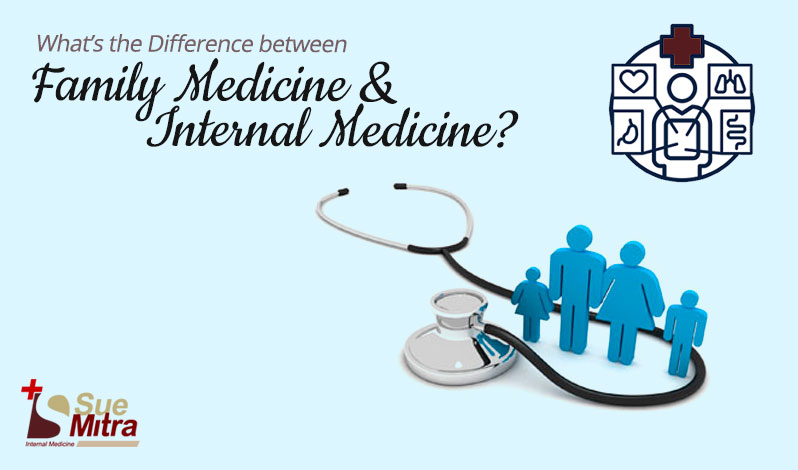
09, May 2022
In recent years, the quantity of language utilized in healthcare and medicine has risen as a consequence of technological advances. 'Primary Care' refers to the initial line of defense while dealing with a non-emergency problem. These doctors are able to identify the root cause of the issue and then take the necessary steps to fix it. Specialized care is what you receive when the precise nature of the problem has been discovered and treatment must be given.
In primary care, Internal Medicine and Family Medicine are two more subcategories to consider. Doctors of Family Medicine and Internists (which is not the same as a medical student intern) are the medical professionals in question.
The Profile of the Population
Family physicians, in contrast to internists, see patients of all ages, including infants, growing children, adults, and the elderly, as previously said. Internists specialize in treating adults, often between the ages of 18 and 60. (geriatrics). Adults and the elderly make up the majority of their patient base, with children making up just 10 to 15 percent.
When it comes to having a family doctor, we've previously spoken about the advantages.
It's all about the Extras
There are a vast variety of disciplines and subspecialties that internists may specialize in, including infectious diseases, psychiatry, orthopedics and dermatology as well as sleep medicine, palliative care and more. This indicates that they are able to treat men and women of all ages and stages of life with equal efficacy. For that you can opt for an internal medicine doctor Melbourne Florida.
.jpg)
When it comes to treating patients of all ages with a wide variety of medical conditions, family physicians excel. The focus of their practice is on preventative medicine, and they are capable of performing a wide range of simple procedures, such as laceration repair, abscess drainage, removal of foreign bodies from the skin or the eyes, simple fracture care, joint injections, excision of skin lesions, diagnostic procedures, nerve blocks such as sigmoidoscopy or proctoscopy, simple gynaecological testing, such as pregnancy tests, and more.
The Training Plan
A residency program or further training is required for doctors after graduation. A three-year trial period is standard practice in the majority of countries across the world.
Critical care, emergency medicine, and medical subspecialty care are all areas in which internal medicine residents get considerable training throughout their time in residency. For a least of three years, they must offer care to patients who are hospitalized or in-patients. In contrast, before being qualified to practice, family practice residents complete a year of in-patient training equivalent to that of internists.
The Aspects of Context
Hospitals are the primary setting for internists to provide in-patient treatment both during and after their training. They must also adhere to a rigid schedule and be available to answer hospital calls at all hours of the day or night.
In contrast to this, Family Physicians spend the bulk of their training and careers doing outpatient procedures in an office or small clinic setting. In no charge, they may even visit patients at their homes.
Outlook
The choice between the two fields of Primary Healthcare described above is a matter of personal taste for medical students.
When it comes to treatment, patients and their loved ones have a clear set of alternatives. Even if the treatment is straightforward, your primary care physician will treat you and then send you to a suitable expert if the problem is more complicated. Consider getting a primary care physician.
Dr. Sue Mitra and her staff strive to offer their patients the best care, advice and services available in the medical field with the goal to keep patient healthy & happy.

Dr. Sue Mitra is board certified in international medicine. She is seen here with a Cologuard, which is a noninvasive colon cancer screening test. (Photo by: Tim Shortt/Florida Today)